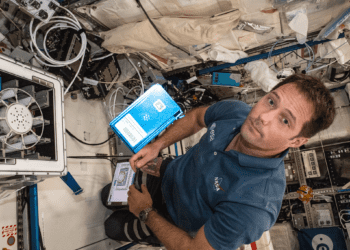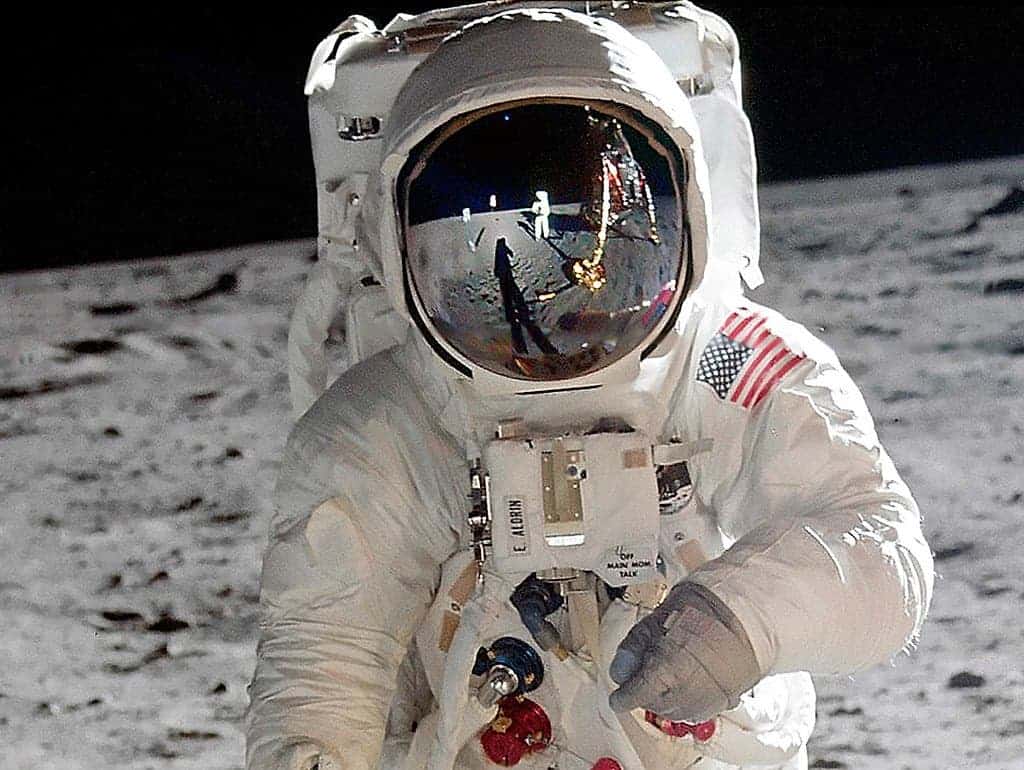
History is not kind to those who follow in the footsteps of pioneers. You probably are aware that Neil Armstrong was the first man to walk on the moon. Perhaps you may know that Buzz Aldrin soon followed in Armstrong’s footsteps. However, many other astronauts went to the moon whose names have been smudged by the decades that followed.
Since the historic landing of Apollo 11 on 21 July 1969, a total of 12 astronauts have walked on the moon. While there, they conducted valuable scientific research and collected moon rocks to bring back to Earth.
The following astronauts have been to the moon in order of setting foot on the lunar surface
Apollo 11
Neil Armstrong, Buzz Aldrin
Apollo 12
Pete Conrad, Alan Bean
Apollo 14
Alan Shepard, Edgar Mitchell
Apollo 15
David Scott, James Irwin
Apollo 16
John Young, Charles Duke
Apollo 17
Gene Cernan, Harrison Schmitt
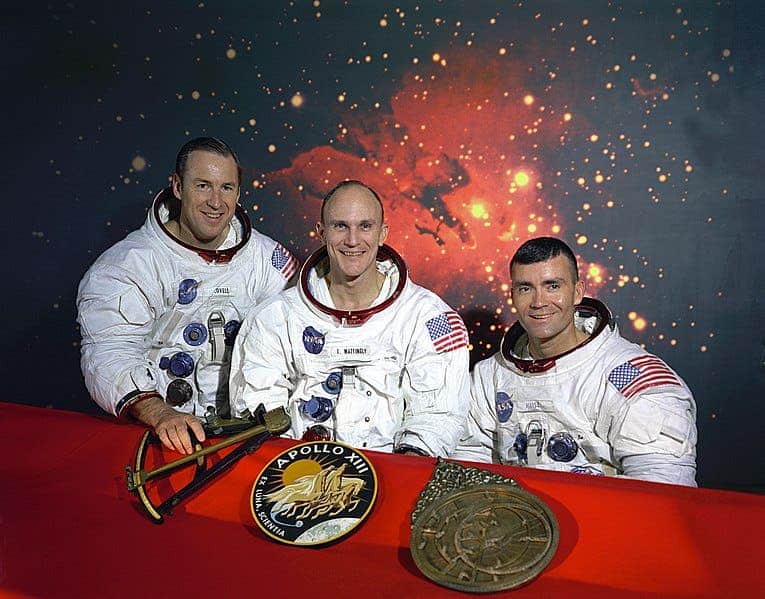
There would have been 14 astronauts on the moon had the Apollo 13 mission (April 11-17, 1970) not been aborted. Apollo 13 was supposed to be the seventh crewed mission in the Apollo space program and the third meant to land humans on the moon. Astronauts Jim Lovell and Fred Haise were scheduled to walk on the moon.
After launching from Kennedy Space Center on April 11, 1970, the lunar landing was aborted after the oxygen tank in the service module malfunctioned two days into the mission, leaving mission control back in Houston scrambling for a solution to bring the crew home safely. The spacecraft was eventually forced to orbit the moon and return to Earth without making a lunar touchdown.
Something good came out of this mission though. To this day, Apollo 13’s record for the farthest humans have ever traveled from Earth is undisputed. The story of the aborted mission was turned into a 1995 docudrama film directed by Ron Howard and starring Tom Hanks.
Haise was promised he would get a second shot at walking on the moon as part of the Apollo 19 mission. However, the programme was axed after funding was cut as NASA focused its attention to the Skylab space station instead of the moon.
While each Apollo mission carried only two astronauts to the surface itself, each mission actually involved three people each. The third member always had to man the orbiting command module. So, technically there were 21 astronauts that went to the moon, or at least orbited it, counting the three members of Apollo 13.
The first and last people to walk on the moon
At 02:56 GMT on 21 July 1969, American astronaut Neil Armstrong became the first person to walk on the Moon after stepping out of the Apollo 11 lunar module onto the surface of a lunar area known as the ‘Sea of Tranquility’.
After the lunar module made its safe touchdown moments prior, Armstrong uttered the words: “Houston, Tranquility Base here. The Eagle has landed.” Then, as he put his left foot on the moon’s surface, Armstrong famously remarked:
“That’s one small step for man, one giant leap for mankind.”
Armstrong was joined roughly 15 minutes later by Edwin “Buzz” Aldrin. The two spent close to an hour on the moon’s surface collecting data and soil samples before famously planting the US flag.
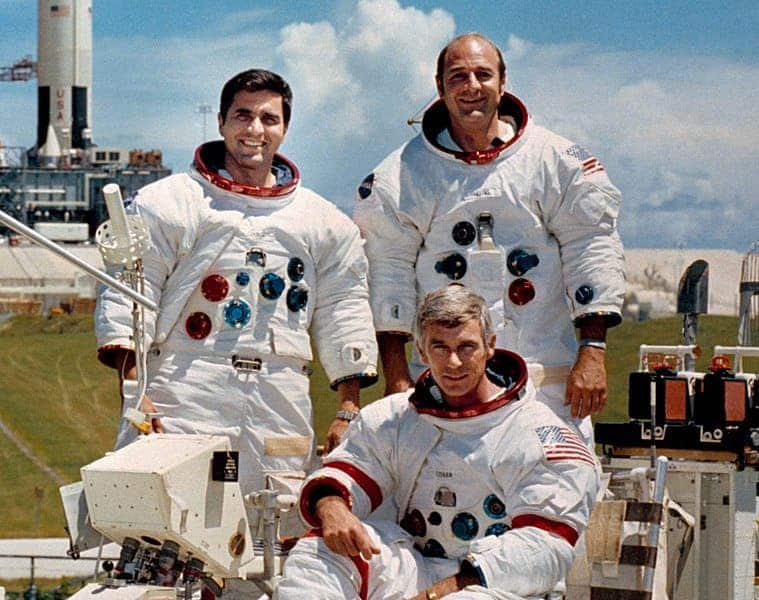
The last two astronauts to walk on the lunar surface were Eugene Cernan and Harrison Schmitt, both astronauts part of NASA’s Apollo 17 mission. They landed in the Taurus-Littrow valley on 11 December 1972 where they spent three days before safely returning home. During their lunar trek, Cernan and Schmitt explored the lunar surface for seven hours each day, collecting a huge number of samples and driving a lunar rover vehicle. Right before lifting off towards Earth, Cernan uttered the last words spoken on the moon thus far:
“As we leave the Moon at Taurus-Littrow, we leave as we came and, God willing, as we shall return, with peace and hope for all mankind.”
Almost 50 years since the last human walked on the moon. Why haven’t we been there again?
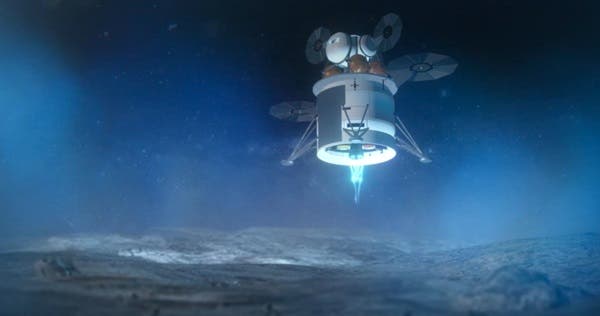
Apollo 17 marked the last time humans have set foot on the moon. In the years that followed, budgetary constraints led to the canceling of other planned subsequent manned missions to the moon. The Apollo missions were always more about making a political statement rather than a scientific foray. The U.S. had proved their dominance over the Soviet Union and there was nothing more to prove.
More recently though, there’s been a lot of expressed interest in returning boots to the moon from both public and private entities.
In 2019, the Trump administration had promised that we will again see American astronauts on the moon by 2024, including the first woman to ever touch the lunar surface, part of a program called Artemis. This target, now only three years away, seems highly unrealistic. NASA former administration Jim Bridenstine said that Artemis needs much more federal funding than it currently receives in order to achieve this stated goal.
“If it wasn’t for the political risk, we would be on the moon right now,” Bridenstine said. “In fact, we would probably be on Mars.”
“It was the political risks that prevented it from happening,” Bridenstine said. “The program took too long and it costs too much money.”
According to NASA’s Bridenstine, Trump’s plan of sending Americans back to the moon’s surface requires an additional $1.6 billion just to kick things off. Among other things, a new lunar module would have to be designed and built from scratch.
Lack of funding is in fact the main reason why we haven’t seen astronauts on the moon in almost 50 years. During the Apollo era, NASA’s portion of the federal budget peaked at 4%. Nowadays, it hovers at around 0.4% — a tenfold decrease in spending compared to the era when humans were on the moon.
The Apollo program cost about $120 billion in today’s money. Returning to the moon would cost around $133 billion over 13 years, according to a NASA report. For comparison, NASA’s budget for the entire fiscal year of 2020 was $22.62 billion, much of which went to fund other important and ambitious space projects such as the rovers and orbiters on Mars, Hubble’s successor the James Webb Space Telescope, and the world’s most powerful rocket known as the Space Launch System.
In February 2021, President Biden announced that he would carry on the Artemis program begun under his predecessor. The Biden administration mentioned that to accomplish its Artemis goals of landing astronauts on the moon, it would do so with the help of industry and international partners, including the European Space Agency and Canadian Space Agency.
It’s still not clear where the money will come from, though. For the 2021 fiscal year, NASA received $23.3 billion, almost $2 billion short of what it had requested from Congress.
Bearing these financial constraints in mind, it seems very unlikely that humans will return to the moon earlier than 2025 unless funding to NASA is dramatically increased — and there’s actually a realistic chance that might happen. As before, politics may turn the tide.
The new space race

The Apollo space race was a de facto confrontation between the world’s two superpowers of the time, the United States and the Soviet Union . Today, a new space race is in the making, with China taking the Soviets’ place.
China didn’t put an astronaut into space until 2003. But it soon made up for lost time. This year, China landed a rover on Mars — the only nation to do so besides the U.S. — and in 2019 China became the first to reach the far side of the moon. And just last week, three Chinese astronauts arrived at the Tianhe module, the core section of China’s planned space station called Tiangong (Heavenly Palace). This direct competitor to the International Space Station, where China was never allowed to contribute technology or manpower, is expected to be completed in 2022.
Concerning future plans for the moon, China and Russia want to put their first crews of astronauts on the moon sometime in the next decade. Remarkably, the joint collaboration aims to build a network of moon bases and satellites in lunar orbit.
Between 2021 and 2025, the collaboration aims to launch at least six robotic missions to the lunar surface meant to scout for future landing spots and conduct scientific experiments. From 2026 to 2035, the focus will be on erecting facilities on the surface and orbit of the moon. From 2036, routine operations are slated, such as lunar research and exploration, human lunar landings, as well as the expansion and maintenance of the modules.
These ambitions have alarmed NASA administrator Bill Nelson, who has called China’s growing space capabilities as “aggressive”. In a statement on May 19, just hours after China released the first images from the Zhurong rover on Mars, Nelson warned congress that the U.S. position of leadership in human spaceflight is threatened. The press release was issued during the same time when the NASA administrator was testifying before the House Appropriations Committee’s commerce, justice and science subcommittee, where he brought one of the Zhurong images.
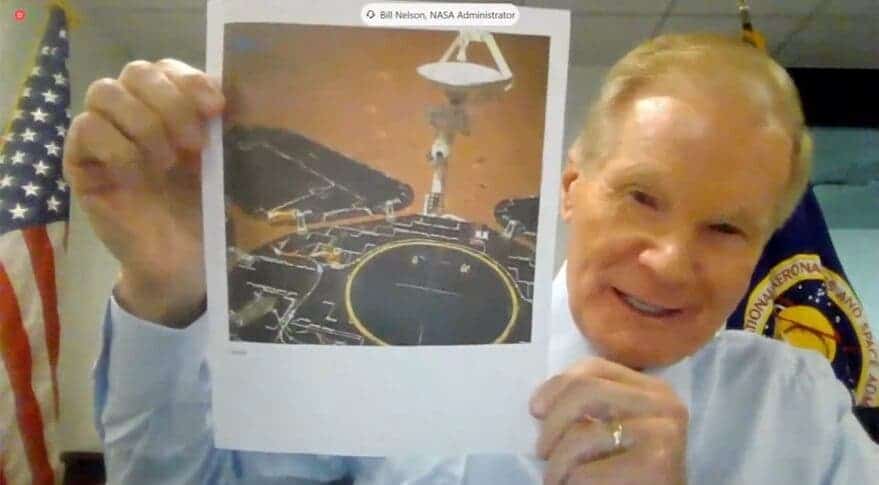
“I want you to see this photograph,” he said, pointing to a printout. “I think that’s now adding a new element as to whether or not we want to get serious and get a lot of activity going in landing humans back on the surface of the moon.”
“It is a very aggressive competitor,” Nelson said of China. “They’re going to be landing humans on the moon. That should tell us something about our need to get off our duff and get our Human Landing System program going vigorously.”
To support the Human Landing System, Nelson asked for an additional $11 billion in the infrastructure package.
It’s unclear if this funding will be eventually granted. What’s certain is that the United States won’t stay the sole country to land astronauts on the moon for too long.


